A LEGEND OF THE NORTHLAND for Class 9 ENGLISH
THEME
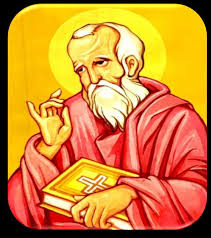
The poem “A Legend of Northland” is a ballad. A ballad is a song narrating a story in short stanzas. Each stanza in a ballad comprises only four lines. The poem is based on the theme that greed is a grave sin. Greedy people do not deserve the blessings and the comforts of human life.
THEME

The poem “A Legend of Northland” is a ballad. A ballad is a song narrating a story in short stanzas. Each stanza in a ballad comprises only four lines. The poem is based on the theme that greed is a grave sin. Greedy people do not deserve the blessings and the comforts of human life.
EXPLANATION
Poem “A Legend of Northland” ek ballad hain. Ek ballad chote stanza mein ek kahani prastut karta hain. Ballad ke pratyek shlok (stanza) mein keval chaar pankti (line) hoti hain. Kavita iss vishye (theme) par adharit hain ki lalch (greed) ek ghor pap (sin) hain. Lalchi log ashirvaad (blessings) aur manav Jeevan ke aaram ke layak nahi hain.
EXPLANATION
कविता "ए लेजेंड ऑफ नॉर्थलैंड" एक गाथागीत (ballad) है। एक गाथागीत लघु छंदों में एक कहानी प्रस्तुत करता हैं। गाथागीत के प्रत्येक श्लोक में केवल चार पंक्तियाँ होती हैं। कविता इस विषय पर आधारित है कि लालच एक घोर पाप है। लालची लोग आशीर्वाद और मानव जीवन के आराम के लायक नहीं हैं।
ABOUT THE AUTHOR
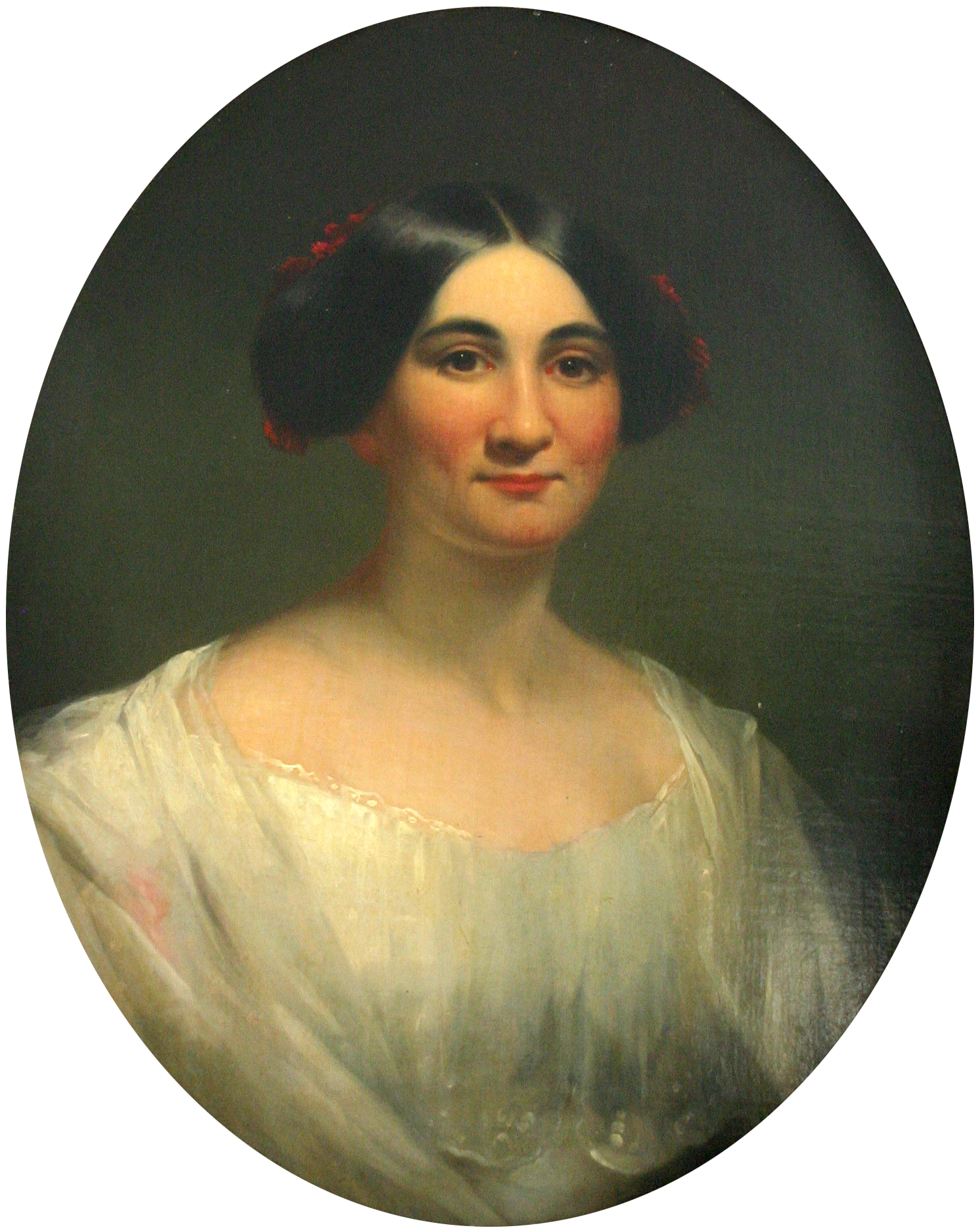
The poet of ‘A Legend of the Northland’, Phoebe Cary was an American poet. She was born on 4th September 1824. She was the younger sister of Alice Cary. Both of them co-published “Poems of Alice and Phoebe Cary” in 1849.
ABOUT THE AUTHOR

The poet of ‘A Legend of the Northland’, Phoebe Cary was an American poet. She was born on 4th September 1824. She was the younger sister of Alice Cary. Both of them co-published “Poems of Alice and Phoebe Cary” in 1849.
EXPLANATION
“A Legend of the Northland”, Phoebe Cary duara likhi gayi hain. Veh ek American kavyitri thi. Unka janam 4 September 1824 ko hua tha. Veh Alice Cary ki choti behen thi. Dono ne 1894 mein “Poems of Alice and Phoebe Cary” ko seh-prakashit kiya tha.
EXPLANATION
ए लेजेंड ऑफ द नॉर्थलैंड', फोएब कैरी द्वारा लिखी गई हैं I वह एक अमेरिकन कवयित्री थी। उनका जन्म 4 सितंबर 1824 को हुआ था। वह ऐलिस कैरी की छोटी बहन थीं। दोनों ने 1849 में "पोएम्स ऑफ एलिस और फोएब कैरी" को सह-प्रकाशित किया था।
PARAGRAPH 1
Away, away in the Northland,
Where the hours of the day are few,
And the nights are so long in winter
That they cannot sleep them through; 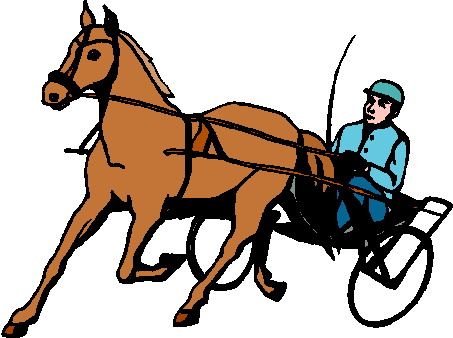
PARAGRAPH 1
Away, away in the Northland,
Where the hours of the day are few,
And the nights are so long in winter
That they cannot sleep them through; 
EXPLANATION
In pankitiyon (lines) mein poetess Northland ke baare mein batati hain. Veh kehti hain ki North Pole, (Northland) ke ass-pass ke shetr mein din ki avdhi (duration) bahut kam hoti hain kyunki yeh aisi jagah hain jahan sooraj (sun) ki kirne (rays) bahut kam samay tak rehti hain. Jab iss shetr mein sardi ka mausam hota hain, toh raat ki avdhi bahut lambi hoti hain, aur din bahut chota hota hain. Fourth line mein (‘they’) is shetr mein rehne wale log ko sandhbrit (refer) karta hain. Poetess ka kehna hain ki raat ki avdhi itni lambi hain ki vo log soo (sleep) nahi paate. Yadi veh soo jate hain aur kuch ghante ke neend lete hain aur phir uthte hain, tab bhi raat ka samay hi hota hain. Poetess iss baat par zor dena chahti hain ki raat ki avdhi bahut lambi hoti hain.
EXPLANATION
इन पंक्तियों में कवयित्री नॉर्थलैंड के बारे में बताती है। वह कहती हैं कि उत्तरी ध्रुव (North Pole), (नॉर्थलैंड) के आसपास के क्षेत्र में दिन की अवधि (duration) बहुत कम होती है क्योंकि यह ऐसी जगह हैं जहाँ सूर्य की किरणें बहुत कम समय तक रहती हैं। जब इस क्षेत्र में सर्दी का मौसम होता है, तो रात की अवधि बहुत लंबी होती है, और दिन बहुत छोटा होता हैं। चौथी पंक्ति में, 'वे' (‘they’) इस क्षेत्र में रहने वाले लोगों को संदर्भित (refer) करता है। कवयित्री का कहना है कि रात की अवधि इतनी लंबी है कि वे लोग सो नहीं पाते। यदि वे सो जाते हैं और कुछ घंटे की नींद लेते हैं और फिर उठते हैं, तब भी रात का समय ही होता है। कवयित्री इस बात पर जोर देना चाहती हैं कि रात की अवधि बहुत लंबी होती है।
PARAGRAPH 2
Where they harness the swift reindeer
To the sledges, when it snows;
And the children look like bear’s cubs
In their funny, furry clothes:
PARAGRAPH 2
Where they harness the swift reindeer
To the sledges, when it snows;
And the children look like bear’s cubs
In their funny, furry clothes:
IMPORTANT WORDS
Harness- to tie the reindeers with a rope to a sledge so that it can be used for transportation, साज़
Sledge- a vehicle on runners for conveying loads or passengers over snow or ice, बर्फ पर चलने वाली बेपहियों की गाड़ी
Furry- covered with fur, रोएँदार
Swift- something which runs very fast, तीव्र
IMPORTANT WORDS
Harness- to tie the reindeers with a rope to a sledge so that it can be used for transportation, साज़
Sledge- a vehicle on runners for conveying loads or passengers over snow or ice, बर्फ पर चलने वाली बेपहियों की गाड़ी
Furry- covered with fur, रोएँदार
Swift- something which runs very fast, तीव्र
EXPLANATION
Poetess kehti hain ki Northland mein bahut thand hain aur yeh ek barfila ilaka hain. Reindeer ek aisa janwar hain jo iss thande shetr mein paya jata hain. Log Reindeer ko sledge se bandhte hain aur phir Reindeer sledge kheenchta hain. Veh kehti hain ki bache bhalu (bear) ke chote bacho ki tarah dikhte hain kyunki veh fur se bane kapde pehnte hain jo fur ek bhalu ki twacha (skin) ki tarah hote hain.
EXPLANATION
कवयित्री कहती हैं कि नॉर्थलैंड में बहुत ठण्ड हैं और यह एक बर्फीला इलाका है। बारहसिंगा (reindeer) एक ऐसा जानवर है जो इस ठंडे क्षेत्र में पाया जाता है। लोग बारहसिंगा को स्लेज से बांधते हैं और फिर बारहसिंगा स्लेज खींचते हैं। वह कहती हैं कि बच्चे भालू के छोटे बच्चों की तरह दिखते हैं क्योंकि वे फर से बने कपड़े पहनते हैं जो फर एक भालू की त्वचा की तरह होते हैं।
PARAGRAPH 3
They tell them a curious story —
I don’t believe ’tis true;
And yet you may learn a lesson
If I tell the tale to you. 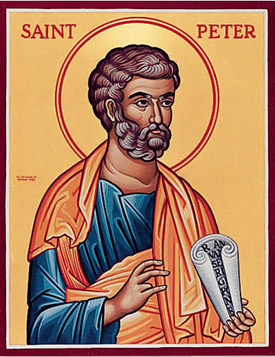
PARAGRAPH 3
They tell them a curious story —
I don’t believe ’tis true;
And yet you may learn a lesson
If I tell the tale to you. 
IMPORTANT WORDS
Curious- eager to know or learn something, उत्सुक
Tale- a fictitious or true narrative or story, काल्पनिक कहानी
IMPORTANT WORDS
Curious- eager to know or learn something, उत्सुक
Tale- a fictitious or true narrative or story, काल्पनिक कहानी
EXPLANATION
Iss paragraph ki pehli line mein (‘they’) mata-pita (parents) ya bado ko sandhbrit karta hain aur (‘them’) bacho ya yuva peedhi (generation) ko sandhbrit karta hain. Northland shetr mein maa-baap apne bacho ko ek ajeeb aur dilchasp kahani sunate hain. Kavyitri kehti hain ki unhe nahi lagta ki kahani sach hain, lekin agar veh yeh kahani pathako (readers) ko sunati hain toh unhe lagta hain ki pathako ko iss kahani se seekh mil sakti hain aur yeh kahani ek mehtvapoorn (important) sandesh deti hain.
EXPLANATION
इस पैराग्राफ की पहली पंक्ति में 'वे' (‘they’) माता-पिता या बड़ों को संदर्भित (refer) करता है और 'उन्हें' (‘them’) बच्चों या युवा पीढ़ी को संदर्भित करता है। नॉर्थलैंड क्षेत्र में मां बाप अपने बच्चों को एक अजीब और दिलचस्प कहानी सुनाते हैं। कवयित्री कहती हैं कि उन्हें नहीं लगता कि कहानी सच है, लेकिन अगर वह यह कहानी पाठकों को सुनाती हैं तो उन्हें लगता हैं कि पाठकों को इस कहानी से सीख मिल सकती हैं और यह कहानी एक महत्वपूर्ण सन्देश देती हैं।
PARAGRAPH 4
Once, when the good Saint Peter
Lived in the world below,
And walked about it, preaching,
Just as he did, you know,
PARAGRAPH 4
Once, when the good Saint Peter
Lived in the world below,
And walked about it, preaching,
Just as he did, you know,
IMPORTANT WORDS
Preach - deliver a religious address to an assembled group of people, धर्म का उपदेश देना
Saint Peter- a disciple or follower of Jesus Christ, जीसस क्राइस्ट का शिष्य
IMPORTANT WORDS
Preach - deliver a religious address to an assembled group of people, धर्म का उपदेश देना
Saint Peter- a disciple or follower of Jesus Christ, जीसस क्राइस्ट का शिष्य
EXPLANATION
Kahani Saint Peter ke baare mein hain. Yeh kahani uss samay ki hain jab Saint Peter prithvi par insaan ke roop mein rehte the aur sabhi priests ki tarah logo ko dharmic vyakhyan (preaching) dete hue ghumte the aur sab logo ko kuch-na-kuch sikhaya karte the.
EXPLANATION
कहानी सेंट पीटर के बारे में है। यह कहानी उस समय की हैं जब सेंट पीटर पृथ्वी पर इंसान के रूप में रहते थे और सभी संतों की तरह लोगों को धार्मिक व्याख्यान (preaching) देते हुए घूमते थे और सब लोगो को कुछ-न-कुछ सिखाया करते थे।
PARAGRAPH 5

He came to the door of a cottage,
In travelling round the earth,
Where a little woman was making cakes,
And baking them on the hearth;
PARAGRAPH 5

He came to the door of a cottage,
In travelling round the earth,
Where a little woman was making cakes,
And baking them on the hearth;
IMPORTANT WORDS
Cottage- a small house, झोपड़ी
Hearth- the floor of a fireplace, भट्ठी
IMPORTANT WORDS
Cottage- a small house, झोपड़ी
Hearth- the floor of a fireplace, भट्ठी
EXPLANATION
Jab Saint Peter duniya bhar mein ghoom rahe the aur logo ko dharmic vyakhyan (preaching) de rahe the toh tab veh ek jhopdi (cottage) ke darwaze (door) par pahunche jahan ek choti height wali budhi mahila (old-woman) bhatti (hearth) mein cake bana rahi thi.
EXPLANATION
जब सेंट पीटर दुनिया भर में घूम रहे थे और लोगों को धार्मिक व्याख्यान दे रहे थे तो तब वह एक झोपड़ी के दरवाजे पर पहुंचे जहां एक छोटी कद वाली बूढ़ी महिला भट्ठी में केक बना रही थी।
PARAGRAPH 6
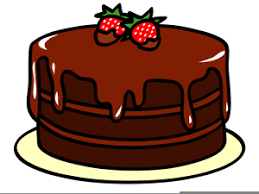
And being faint with fasting,
For the day was almost done,
He asked her, from her store of cakes,
To give him a single one.
PARAGRAPH 6

And being faint with fasting,
For the day was almost done,
He asked her, from her store of cakes,
To give him a single one.
IMPORTANT WORDS
Faint- feeling weak, dizzy, or exhausted; about to lose consciousness, बेहोश होना
Fasting- abstain from all or some kinds of food or drink, उपवास करना
IMPORTANT WORDS
Faint- feeling weak, dizzy, or exhausted; about to lose consciousness, बेहोश होना
Fasting- abstain from all or some kinds of food or drink, उपवास करना
EXPLANATION
Saint Peter ne poore din kuch bhi nahi khaya tha, isliye unhe bahut bhook lagi thi aur kamzoori mehsoos ho rahi thi. Veh uss aurat ke paas gaye jo cake bana rahi thi, aur unhone usse itne saare cake mein se ek cake khane ke liye manga.
EXPLANATION
सेंट पीटर ने पूरे दिन कुछ भी नहीं खाया था, इसलिए उन्हें बहुत भूख लगी थी और कमजोरी महसूस हो रही थी। वह उस औरत के पास गए जो केक बना रही थी, और उन्होंने उससे इतने सारे केक में से एक केक खाने के लिए माँगा।
PARAGRAPH 7
So she made a very little cake,
But as it baking lay,
She looked at it, and thought it seemed
Too large to give away.
PARAGRAPH 7
So she made a very little cake,
But as it baking lay,
She looked at it, and thought it seemed
Too large to give away.
IMPORTANT WORDS
Lay- put something down gently or carefully, किसी चीज को रखना
IMPORTANT WORDS
Lay- put something down gently or carefully, किसी चीज को रखना
EXPLANATION
Mahila swarthi (selfish) thi aur usne Saint Peter ko cake nahi diya. Iske bajaye, uske Saint Peter ke liye ek bahut chota cake banana shuru kiya. Veh apna cake kisi ke sath sajha (share) nahi karna chahti thi. Lekin, jab usne cake ko bake karne ke liye rakha, toh usne socha ki yeh cake Saint Peter ko dene ke liye bahut bada hain.
EXPLANATION
महिला स्वार्थी थी और उसने सेंट पीटर को केक नहीं दिया। इसके बजाय, उसने सेंट पीटर के लिए एक बहुत छोटा केक बनाना शुरू किया। वह अपना केक किसी के साथ साझा (share) नहीं करना चाहती थी। लेकिन, जब उसने केक को बेक करने के लिए रखा, तो उसने सोचा कि यह केक सेंट पीटर को देने के लिए बहुत बड़ा हैं।
PARAGRAPH 8
Therefore she kneaded another,
And still a smaller one;
But it looked, when she turned it over,
As large as the first had done.
PARAGRAPH 8
Therefore she kneaded another,
And still a smaller one;
But it looked, when she turned it over,
As large as the first had done.
IMPORTANT WORDS
Knead- to press something, especially a mixture for making bread, firmly and repeatedly with the hands and fingers, गूंधना
IMPORTANT WORDS
Knead- to press something, especially a mixture for making bread, firmly and repeatedly with the hands and fingers, गूंधना
EXPLANATION
Uss kanjoos mahila ne socha ki cake itna bada hain ki use diya nahi ja sakta. Isliye usne ek aur chota cake banana shuru kiya. Jab usne uss cake ko dekha, toh use phir laga ki yeh pichle cake jitna bada hain. Phir, iss cake ko bhi Saint Peter ko dene ke liye tayaar nahi thi.
EXPLANATION
उस कंजूस महिला ने सोचा कि केक इतना बड़ा है कि उसे दिया नहीं जा सकता। इसलिए, उसने एक और छोटा केक बनाना शुरू किया। जब उसने उस केक को देखा, तो उसे फिर लगा कि यह पिछले केक जितना बड़ा है। फिर, वह इस केक को भी सेंट पीटर को देने के लिए तैयार नहीं थी।
PARAGRAPH 9
Then she took a tiny scrap of dough,
And rolled and rolled it flat;
And baked it thin as a wafer —
But she couldn’t part with that.
PARAGRAPH 9
Then she took a tiny scrap of dough,
And rolled and rolled it flat;
And baked it thin as a wafer —
But she couldn’t part with that.
IMPORTANT WORDS
Scrap- small amount, छोटा सा टुकड़ा
Dough- a mixture that consists essentially of flour or meal and a liquid and is stiff enough to knead or roll, गुँथा हुआ आटा
Wafer- a thin, light, crisp biscuit, especially one of a kind eaten with ice cream, एक पतली, हल्की, पापड़ जैसा बिस्किट
IMPORTANT WORDS
Scrap- small amount, छोटा सा टुकड़ा
Dough- a mixture that consists essentially of flour or meal and a liquid and is stiff enough to knead or roll, गुँथा हुआ आटा
Wafer- a thin, light, crisp biscuit, especially one of a kind eaten with ice cream, एक पतली, हल्की, पापड़ जैसा बिस्किट
EXPLANATION
Teesri baar jab veh aurat cake bana rahi thi toh, usne bahut kam matra (quantity) me aata (flour) liya aur usse roll kiya. Poetess kehti hai ki veh aurat uss aate (flour) ko roll karti hi gayi jab tak usne aate ko bel- belkar wafer jitna patla nah bana diya. Usne uss cake ko bake kiya aur usne veh cake bhi Saint Peter ko nahi diya kyunki veh bahut lalchi (greedy) aur swarthi (selfish) aurat thi aur veh itna patla cake bhi nahi de sakti thi.
EXPLANATION
तीसरी बार जब वह औरत केक बना रही थी तो, उसने बहुत कम मात्रा में आटा लिया और उसे रोल किया। कवयित्री कहती है कि वह औरत उस आटे को रोल करती ही गयी जब तक उसने आटे को बेल-बेलकर वेफर जितना पतला न बना दिया। उसने उस केक को बेक किया और उसने वह केक भी सेंट पीटर को नहीं दिया क्यूंकि वह बहुत लालची और स्वार्थी औरत थी और वह इतना पतला केक भी नहीं दे सकती थी।
PARAGRAPH 10
For she said, “My cakes that seem too small
When I eat of them myself
Are yet too large to give away.”
So she put them on the shelf.
PARAGRAPH 10
For she said, “My cakes that seem too small
When I eat of them myself
Are yet too large to give away.”
So she put them on the shelf.
IMPORTANT WORDS
Shelf- a thin flat usually long and narrow piece of material (such as wood), ताक
IMPORTANT WORDS
Shelf- a thin flat usually long and narrow piece of material (such as wood), ताक
EXPLANATION
Mahila ne tark (statement) diya ki, jab usne cake khaye toh use laga ki veh bahut chote hai lekin agar jab veh cake use kisi aur ko dena hai toh use laga ki veh itne bade cake hai ki unhe diya nahi jaa sakta. Usne saare cake apni rasoi (kitchen) ki shelf par rakh diye aur usne Saint Peter ko koi cake nahi diya.
EXPLANATION
महिला ने तर्क दिया कि, जब उसने केक खाए, तो उसे लगा कि वे बहुत छोटे हैं, लेकिन अगर जब वह केक उसे किसी को देना है, तो उसे लगा कि वे इतने बड़े हैं कि उन्हें दिया नहीं जा सकता। उसने सारे केक अपनी रसोई की शेल्फ पर रख दिए और उसने सेंट पीटर को कोई केक नहीं दिया।
PARAGRAPH 11
Then good Saint Peter grew angry,
For he was hungry and faint;
And surely such a woman
Was enough to provoke a saint.
PARAGRAPH 11
Then good Saint Peter grew angry,
For he was hungry and faint;
And surely such a woman
Was enough to provoke a saint.
IMPORTANT WORDS
Provoke- deliberately make someone annoyed or angry, दुसरो को गुस्सा दिलवाना
IMPORTANT WORDS
Provoke- deliberately make someone annoyed or angry, दुसरो को गुस्सा दिलवाना
EXPLANATION
Saint Peter aurat ke swarthi (selfish) aadat ke karan krodhit (angry) ho gaye. Veh bahut bhukhe (hungry) aur kamzor (weak) mehsus (feel) kar rahe the aur lekin swarthi mahila unhe ek chota sa cake bhi dene ke liye taiyar (ready) nahi thi. Lalchi mahila ke iss vyavhar (behaviour) se Saint Peter bahut naraz ho gaye.
EXPLANATION
सेंट पीटर औरत के स्वार्थी व्यवहार के कारण क्रोधित हो गए। वह बहुत भूखे और कमज़ोर महसूस कर रहे थे लेकिन स्वार्थी महिला उन्हें एक छोटा सा केक भी देने को तैयार नहीं थी। लालची महिला के इस व्यवहार ने सेंट पीटर को बहुत क्रोधित कर दिया।
PARAGRAPH 12
And he said, “You are far too selfish
To dwell in a human form,
To have both food and shelter,
And fire to keep you warm.
PARAGRAPH 12
And he said, “You are far too selfish
To dwell in a human form,
To have both food and shelter,
And fire to keep you warm.
IMPORTANT WORDS
Dwell- to live in a place or in a particular way, किसी जगह पर एक विशेष तरीके से रहना
IMPORTANT WORDS
Dwell- to live in a place or in a particular way, किसी जगह पर एक विशेष तरीके से रहना
EXPLANATION
Saint Peter ne mahila ko shrap (curse) diya aur kaha ki veh bahut swarthi hai. Veh ek insan ki tarah jeevan jeene ke layak nahi thi. Unhone kaha ki bhagwaan ne unhe bhojan (food), aashrye (shelter), apne aap ko garam, sukhad (happy), aaramdayak (comfortable) jeevan jeene ke liye di hai lekin veh apne pass maujood sabhi sansadhano (necessities) ke liye swarthi ho gayi thi. Veh unhe kisi ke sath sajha (share) nahi karna chahti thi.
EXPLANATION
सेंट पीटर ने महिला को श्राप दिया और कहा कि वह बहुत स्वार्थी है। वह एक इंसान की तरह जीवन जीने के लायक नहीं थी। उन्होंने कहा कि भगवान ने उन्हें भोजन, आश्रय, आग, अपने आप को गरम, सुखद, आरामदायक जीवन जीने के लिए सारी चीज़ें दी हैं लेकिन वह अपने पास मौजूद सभी संसाधनों के लिए स्वार्थी हो गई थी। वह उन्हें किसी के साथ साझा नहीं करना चाहती थी।
PARAGRAPH 13
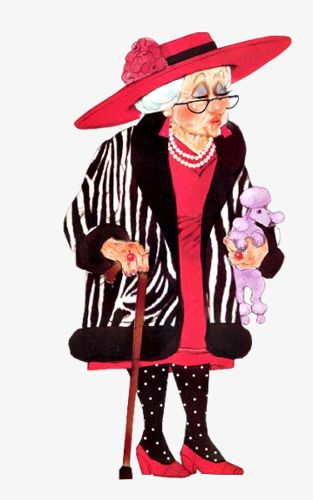
Now, you shall build as the birds do,
And shall get your scanty food
By boring, and boring, and boring,
All day in the hard, dry wood.”
PARAGRAPH 13

Now, you shall build as the birds do,
And shall get your scanty food
By boring, and boring, and boring,
All day in the hard, dry wood.”
IMPORTANT WORDS
Scanty- small or insufficient in quantity or amount, थोड़ा
Bore- to make a hole in something, किसी चीज में छेद करना
IMPORTANT WORDS
Scanty- small or insufficient in quantity or amount, थोड़ा
Bore- to make a hole in something, किसी चीज में छेद करना
EXPLANATION
Saint Peter ne mahila ko shrap (curse) diya ki veh ek pakshi (bird) ban jaegi kyunki veh manav jeevan jeene ke layak nahi thi. Veh ek chidiya ban jaegi aur jiss tarah pakshi ped (tree) ki lakdi khodkar apna ghar banate hai aur pure din kadhi mehnat (hard work) karke bahut kam (tiny) bhojan ikkatta (collect) karte hai, ussi tarah veh bhi pure din junglon me kadhi mehnat karegi aur thoda bhojan prapt kregi aur khud ke rehne ke liye chota sa ghar banaegi.
EXPLANATION
सेंट पीटर ने महिला को श्राप दिया कि वह एक पक्षी बन जाएगी क्योंकि वह मानव जीवन जीने के लायक नहीं थी। वह एक चिड़िया बन जाएगी और जिस तरह पक्षी पेड़ की लकड़ी खोदकर अपना घर बनाते हैं और पूरे दिन कड़ी मेहनत करके बहुत कम भोजन इकट्ठा करते हैं, उसी तरह वह भी पूरे दिन जंगलो में कड़ी मेहनत करेगी और थोड़ा भोजन प्राप्त करेगी और खुद के रहने के लिए छोटा सा घर बनाएगी।
PARAGRAPH 14

Then up she went through the chimney,
Never speaking a word,
And out of the top flew a woodpecker,
For she was changed to a bird.
PARAGRAPH 14

Then up she went through the chimney,
Never speaking a word,
And out of the top flew a woodpecker,
For she was changed to a bird.
IMPORTANT WORDS
Chimney- a pipe through which smoke goes up into the air, usually through the roof of a building, एक पाइप जिसके माध्यम से धुआं घरों की छतों से बहार जाता है
Woodpecker- a bird with a strong bill and a stiff tail, कठफोड़वा
IMPORTANT WORDS
Chimney- a pipe through which smoke goes up into the air, usually through the roof of a building, एक पाइप जिसके माध्यम से धुआं घरों की छतों से बहार जाता है
Woodpecker- a bird with a strong bill and a stiff tail, कठफोड़वा
EXPLANATION
Jaise hi saint Peter ne mahila ko shrap diya, use apne liye bolne ka mauka nahi mila kyunki ussi shann (time), veh chimney ke madhyam se ek woodpecker ke roop me udd gayi. Saint Peter ke shrap ne mahila ko ek pakshi (woodpecker) me badal diya tha.
EXPLANATION
जैसे ही सेंट पीटर ने महिला को श्राप दिया, उसे अपने लिए बोलने का मौका नहीं मिला क्योंकि उसी क्षण, वह चिमनी के माध्यम से एक कठफोड़वा (woodpecker) के रूप में उड़ गई। सेंट पीटर के श्राप ने महिला को एक पक्षी में बदल दिया था।
PARAGRAPH 15

She had a scarlet cap on her head,
And that was left the same;
But all the rest of her clothes were burned
Black as a coal in the flame.
PARAGRAPH 15

She had a scarlet cap on her head,
And that was left the same;
But all the rest of her clothes were burned
Black as a coal in the flame.
IMPORTANT WORDS
Scarlet- a brilliant red colour, लाल रंग
IMPORTANT WORDS
Scarlet- a brilliant red colour, लाल रंग
EXPLANATION
Mahila jab woodpecker me badli toh uss samay usne sar par laal rang ki topi pehen rakhi thi. Yeh topi woodpecker ke sar par bhi hoti hai lekin mahila ke bache huye kapde koyele (coal) ki tarah jalkar kaale ho gaye the. Dusre shabdo me, woodpecker (mahila) ka sar laal aur baaki shareer kala ho gaya tha.
EXPLANATION
महिला जब कठफोड़वा में बदली तो उस समय उसने सिर पर लाल रंग की टोपी पहन रखी थी। यह टोपी कठफोड़वा के सिर पर भी होती है लेकिन महिला के बचे हुए कपड़े कोयले की तरह जलकर काले हो गए थे। दूसरे शब्दों में, कठफोड़वा (महिला) का सिर लाल और बाकी शरीर काला हो गया था।
PARAGRAPH 16

And every country schoolboy
Has seen her in the wood,
Where she lives in the trees till this very day,
Boring and boring for food.
PARAGRAPH 16

And every country schoolboy
Has seen her in the wood,
Where she lives in the trees till this very day,
Boring and boring for food.
IMPORTANT WORDS
Country- belonging to the countryside i.e. rural areas, ग्रामीण इलाके
IMPORTANT WORDS
Country- belonging to the countryside i.e. rural areas, ग्रामीण इलाके
EXPLANATION
Gramin ilako (country) me rehne vaale logon ne yahan tak ki school jaane wale chote bacho ne bhi jungle mein se us woodpecker (mahila) ko dekha, joh asliyat me vahi shrapit aurat thi. Veh dekhte hai ki veh saara din vahin rehti hai aur apna bhojan ikkatta karne ke liye apni chonch (beak) se lakdi (wood) khodti rehti hai. Jab bhi koi bacha iss taraf ke pakshi ko dekhta hai toh uske bade (elders, parents) use yeh kahani sunate hain. Unka kehta hai ki chidiya pehle aurat hua karti thi. Veh bahut lalchi thi aur isliye, use Saint Peter ne shrap diya aur use ek woodpecker me badal diya. Unhe iss kahani se yeh shiksha milti hai ki hume kabhi lalchi nahi hota chaiye.
EXPLANATION
ग्रामीण इलाकों में रहने वाले लोगों ने यहां तक कि स्कूल जाने वाले छोटे बच्चों ने भी जंगल में उस कठफोड़वे को देखा, जो असलियत में वही श्रापित औरत थी। वे देखते हैं कि वह सारा दिन वहीं रहती है और अपना भोजन इकट्ठा करने के लिए अपनी चोंच से लकड़ी खोदती रहती है। जब भी कोई बच्चा इस तरह के पक्षी को देखता है तो उसके बड़े उसे यह कहानी सुनाते हैं। उनका कहना है कि चिड़िया पहले औरत हुआ करती थी। वह बहुत लालची थी और इसलिए, उसे सेंट पीटर ने श्राप दिया और उसे एक कठफोड़वे में बदल दिया। उन्हें इस कहानी से यह शिक्षा मिलती है कि हमे कभी लालची नहीं होना चाहिए।
SUMMARY
SUMMARY
POETIC DEVICES
Alliteration
Alliteration is the use, especially in poetry, of the same sound or sounds, especially consonants, at the beginning of several words that are close together.
For Example: a) funny, furry - ‘f’ sound is repeating in the line "In their funny, furry clothes: "
b) still, smaller - ‘s’ sound is repeating in the line "And still a smaller one;"
Simile
A figure of speech involving the comparison of one thing with another thing of a different kind, used to make a description more emphatic or vivid.
For Example: a) "And the children look like bear’s cubs "
b) "But all the rest of her clothes were burned
Black as a coal in the flame."
Repetition
Repetition is the simple repeating of a word, within a short space of words.
For Example: a) “Away, away in the Northland,"
b) "And rolled and rolled it flat;"
c) "By boring, and boring, and boring,"
d) "Boring and boring for food."
Enjambment
Enjambment refers to 'the running over of a sentence from one verse or couplet into another so that closely related words fall in different lines.'
For Example: a) "And the nights are so long in winter
That they cannot sleep them through;"
b) "Then she took a tiny scrap of dough,
And rolled and rolled it flat;
And baked it thin as a wafer —"
POETIC DEVICES
Alliteration
Alliteration is the use, especially in poetry, of the same sound or sounds, especially consonants, at the beginning of several words that are close together.
For Example: a) funny, furry - ‘f’ sound is repeating in the line "In their funny, furry clothes: "
b) still, smaller - ‘s’ sound is repeating in the line "And still a smaller one;"
Simile
A figure of speech involving the comparison of one thing with another thing of a different kind, used to make a description more emphatic or vivid.
For Example: a) "And the children look like bear’s cubs "
b) "But all the rest of her clothes were burned
Black as a coal in the flame."
Repetition
Repetition is the simple repeating of a word, within a short space of words.
For Example: a) “Away, away in the Northland,"
b) "And rolled and rolled it flat;"
c) "By boring, and boring, and boring,"
d) "Boring and boring for food."
Enjambment
Enjambment refers to 'the running over of a sentence from one verse or couplet into another so that closely related words fall in different lines.'
For Example: a) "And the nights are so long in winter
That they cannot sleep them through;"
b) "Then she took a tiny scrap of dough,
And rolled and rolled it flat;
And baked it thin as a wafer —"
QUESTION ANSWERS
1. Which country or countries do you think “the Northland” refers to?
Answer. It refers to the country which is situated in the north, where the days are short and the nights are long.
2. What did Saint Peter ask the old lady for? What was the lady’s reaction?
Answer. Saint Peter asked the old lady for a piece of cake. The lady was very greedy and she behaved miserly with Saint Peter. She kept decreasing the size of the cake. At last she did not give him anything to eat.
3. How did he punish her?
Answer. He cursed her and turned her into a woodpecker.
4. How does the woodpecker get her food?
Answer. The woodpecker bores the hard and dry wood to get its food.
5. Do you think that the old lady would have been so ungenerous if she had known who Saint Peter really was? What would she have done then?
Answer. No, I don’t think she would have been so ungenerous if she had known who Saint Peter was. She would have given him a large piece of cake to make him happy with the greed to get a handsome return.
6. Is this a true story? Which part of this poem do you feel is the most important?
Ans. No, this is an imaginative story. I feel that the point in the story where the old lady is changed into a woodpecker is the most important. This is because the punishment meted out to the lady teaches us the value of generosity and charity.
7. What is a legend? Why is this poem called a legend?
Answer. A legend is a story from ancient times about people and events. It is called a legend because the poet himself says that ‘I don’t believe it is true’.
8. Write the story of ‘A Legend of the Northland’ in about ten sentences.
Answer. The poem is a story of an old woman. Saint Peter asks the old lady for food as he had become weak because of fasting and travelling. But her greediness forces her not to give him anything. He gets angry and curses her. He turns her into a woodpecker who bores hard, dry wood to get food. Her clothes are burnt into ashes and she is left with a cap on her head. She bores into hardwood for her little food.
QUESTION ANSWERS
1. Which country or countries do you think “The Northland” refers to?
Answer. It refers to the country which is situated in the north, where the days are short and the nights are long.
2. What did Saint Peter ask the old lady for? What was the lady’s reaction?
Answer. Saint Peter asked the old lady for a piece of cake. The lady was very greedy and she behaved miserly with Saint Peter. She kept decreasing the size of the cake. At last she did not give him anything to eat.
3. How did he punish her?
Answer. He cursed her and turned her into a woodpecker.
4. How does the woodpecker get her food?
Answer. The woodpecker bores the hard and dry wood to get its food.
5. Do you think that the old lady would have been so ungenerous if she had known who Saint Peter really was? What would she have done then?
Answer. No, I don’t think she would have been so ungenerous if she had known who Saint Peter was. She would have given him a large piece of cake to make him happy with the greed to get a handsome return.
6. Is this a true story? Which part of this poem do you feel is the most important?
Ans. No, this is an imaginative story. I feel that the point in the story where the old lady is changed into a woodpecker is the most important. This is because the punishment meted out to the lady teaches us the value of generosity and charity.
7. What is a legend? Why is this poem called a legend?
Answer. A legend is a story from ancient times about people and events. It is called a legend because the poet himself says that ‘I don’t believe it is true’.
8. Write the story of ‘A Legend of the Northland’ in about ten sentences.
Answer. The poem is a story of an old woman. Saint Peter asks the old lady for food as he had become weak because of fasting and travelling. But her greediness forces her not to give him anything. He gets angry and curses her. He turns her into a woodpecker who bores hard, dry wood to get food. Her clothes are burnt into ashes and she is left with a cap on her head. She bores into hardwood for her little food.
EXTRA QUESTIONS AND ANSWERS
1. Why does the poet say that the hours of the day are few?
ANSWER- The Northland is a cold snow-covered region near the North Pole. Here the days are shorter and the nights are longer. As a result, there are very few hours in a day.
2. Why are people unable to sleep through the night?
ANSWER- The people are unable to sleep through the night because the nights are very long and cold.
3. ‘And the children look like bear’s cubs.’ What have the children been compared to? Why?
ANSWER- Northland is a cold place so the children have to wear funny furry dresses to protect themselves from the cold. These dresses make them look like bear cubs.
4. Who came to the woman’s house and what did he ask for?
ANSWER- Saint Peter, while preaching around the world, reached the woman’s door. He had been travelling the whole day and was tired and hungry. When Saint Peter saw the woman making cakes, he asked her for one of her large stores of cakes.
EXTRA QUESTIONS AND ANSWERS
1. Why does the poet say that the hours of the day are few?
ANSWER- The Northland is a cold snow-covered region near the North Pole. Here the days are shorter and the nights are longer. As a result, there are very few hours in a day.
2. Why are people unable to sleep through the night?
ANSWER- The people are unable to sleep through the night because the nights are very long and cold.
3. ‘And the children look like bear’s cubs.’ What have the children been compared to? Why?
ANSWER- Northland is a cold place so the children have to wear funny furry dresses to protect themselves from the cold. These dresses make them look like bear cubs.
4. Who came to the woman’s house and what did he ask for?
ANSWER- Saint Peter, while preaching around the world, reached the woman’s door. He had been travelling the whole day and was tired and hungry. When Saint Peter saw the woman making cakes, he asked her for one of her large stores of cakes.
PREVIOUS YEAR QUESTIONS AND ANSWERS
1. Why was Saint Peter tired and hungry?
ANSWER- Saint Peter was an apostle of Jesus Christ. He travelled around the land, preaching the message of Christ. During his journey, sometimes, he did not get food and water. Besides, he had to observe fasts also. This often left him tired and hungry.
2. What did Saint Peter ask the woman for? What was the woman’s reaction?
ANSWER- Saint Peter asked the old lady for a cake from her store of cakes. The very greedy woman did not wish to part with her cakes as she felt they were too large to be given away. So she made a small cake for him, but that too seemed too big to be given away. In the end, she made a very small and thin cake. But she didn't even give that cake to St. Peter and she put it away on the shelf.
3. Why did the woman bake a little cake?
ANSWER- The woman in the poem has been shown as being highly stingy, miserly, greedy, and mean by nature. Whenever she picked up a cake to give it away, it appeared to be too large to give away. Hence, she baked a very small cake for Saint Peter that was as thin as a wafer.
4. How is the woman seen by the people of Northland?
ANSWER- Boys going to the forest have seen the woman, as a woodpecker in the woods. She lives in a nest in the tree and bores into the hard dry wood for her food.
PREVIOUS YEAR QUESTIONS AND ANSWERS
1. Why was Saint Peter tired and hungry?
ANSWER- Saint Peter was an apostle of Jesus Christ. He travelled around the land, preaching the message of Christ. During his journey, sometimes, he did not get food and water. Besides, he had to observe fasts also. This often left him tired and hungry.
2. What did Saint Peter ask the woman for? What was the woman’s reaction?
ANSWER- Saint Peter asked the old lady for a cake from her store of cakes. The very greedy woman did not wish to part with her cakes as she felt they were too large to be given away. So she made a small cake for him, but that too seemed too big to be given away. In the end, she made a very small and thin cake. But she didn't even give that cake to St. Peter and she put it away on the shelf.
3. Why did the woman bake a little cake?
ANSWER- The woman in the poem has been shown as being highly stingy, miserly, greedy, and mean by nature. Whenever she picked up a cake to give it away, it appeared to be too large to give away. Hence, she baked a very small cake for Saint Peter that was as thin as a wafer.
4. How is the woman seen by the people of Northland?
ANSWER- Boys going to the forest have seen the woman, as a woodpecker in the woods. She lives in a nest in the tree and bores into the hard dry wood for her food.
GLOSSARY
Harness- to tie the reindeers with a rope to a sledge so that it can be used for transportation, साज़
Sledge- a vehicle on runners for conveying loads or passengers over snow or ice, बर्फ पर चलने वाली बेपहियों की गाड़ी
Furry- covered with fur, रोएँदार
Swift- something which runs very fast, तीव्र
Curious- eager to know or learn something, उत्सुक
Tale- a fictitious or true narrative or story, काल्पनिक कहानी
Preach - deliver a religious address to an assembled group of people, धर्म का उपदेश देना
Saint Peter- a disciple or follower of Jesus Christ, जीसस क्राइस्ट का शिष्य
Cottage- a small house, झोपड़ी
Hearth- the floor of a fireplace, भट्ठी
Faint- feeling weak, dizzy, or exhausted; about to lose consciousness, बेहोश होना
Fasting- abstain from all or some kinds of food or drink, उपवास करना
Lay- put something down gently or carefully, किसी चीज को रखना
Knead- to press something, especially a mixture for making bread, firmly and repeatedly with the hands and fingers, गूंधना
Scrap- small amount, छोटा सा टुकड़ा
Dough- a mixture that consists essentially of flour or meal and a liquid and is stiff enough to knead or roll, गुँथा हुआ आटा
Wafer- a thin, light, crisp biscuit, especially one of a kind eaten with ice cream, एक पतली, हल्की, पापड़ जैसा बिस्किट
Shelf- a thin flat usually long and narrow piece of material (such as wood), ताक
Provoke- deliberately make someone annoyed or angry, दुसरो को गुस्सा दिलवाना
Dwell- to live in a place or in a particular way, किसी जगह पर एक विशेष तरीके से रहना
Scanty- small or insufficient in quantity or amount, थोड़ा
Bore- to make a hole in something, किसी चीज में छेद करना
Chimney- a pipe through which smoke goes up into the air, usually through the roof of a building, एक पाइप जिसके माध्यम से धुआं घरों की छतों से बहार जाता है
Woodpecker- a bird with a strong bill and a stiff tail, कठफोड़वा
Scarlet- a brilliant red colour, लाल रंग
Country- belonging to the countryside i.e. rural areas, ग्रामीण इलाके
GLOSSARY
Harness- to tie the reindeers with a rope to a sledge so that it can be used for transportation, साज़
Sledge- a vehicle on runners for conveying loads or passengers over snow or ice, बर्फ पर चलने वाली बेपहियों की गाड़ी
Furry- covered with fur, रोएँदार
Swift- something which runs very fast, तीव्र
Curious- eager to know or learn something, उत्सुक
Tale- a fictitious or true narrative or story, काल्पनिक कहानी
Preach - deliver a religious address to an assembled group of people, धर्म का उपदेश देना
Saint Peter- a disciple or follower of Jesus Christ, जीसस क्राइस्ट का शिष्य
Cottage- a small house, झोपड़ी
Hearth- the floor of a fireplace, भट्ठी
Faint- feeling weak, dizzy, or exhausted; about to lose consciousness, बेहोश होना
Fasting- abstain from all or some kinds of food or drink, उपवास करना
Lay- put something down gently or carefully, किसी चीज को रखना
Knead- to press something, especially a mixture for making bread, firmly and repeatedly with the hands and fingers, गूंधना
Scrap- small amount, छोटा सा टुकड़ा
Dough- a mixture that consists essentially of flour or meal and a liquid and is stiff enough to knead or roll, गुँथा हुआ आटा
Wafer- a thin, light, crisp biscuit, especially one of a kind eaten with ice cream, एक पतली, हल्की, पापड़ जैसा बिस्किट
Shelf- a thin flat usually long and narrow piece of material (such as wood), ताक
Provoke- deliberately make someone annoyed or angry, दुसरो को गुस्सा दिलवाना
Dwell- to live in a place or in a particular way, किसी जगह पर एक विशेष तरीके से रहना
Scanty- small or insufficient in quantity or amount, थोड़ा
Bore- to make a hole in something, किसी चीज में छेद करना
Chimney- a pipe through which smoke goes up into the air, usually through the roof of a building, एक पाइप जिसके माध्यम से धुआं घरों की छतों से बहार जाता है
Woodpecker- a bird with a strong bill and a stiff tail, कठफोड़वा
Scarlet- a brilliant red colour, लाल रंग
Country- belonging to the countryside i.e. rural areas, ग्रामीण इलाके
